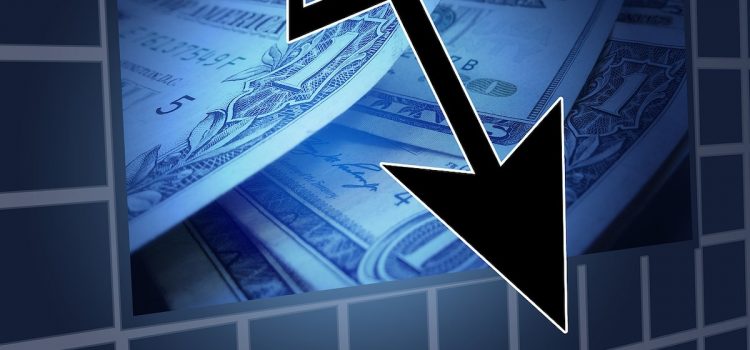

This article is an excerpt from the Shortform book guide to "Going Infinite" by Michael Lewis. Shortform has the world's best summaries and analyses of books you should be reading.
Like this article? Sign up for a free trial here.
Why did FTX collapse? What happened on Twitter that got the ball rolling? How did Caroline Ellison make matters worse?
Although Sam Bankman-Fried’s cryptocurrency empire skyrocketed in just a few years, its demise was far more sudden and dramatic. Michael Lewis provides an account of the downfall of FTX in his book Going Infinite.
Read more to learn how three events on November 6, 2022, led to FTX’s collapse within days.
Why Did FTX Collapse?
Why did FTX collapse? Lewis writes that a series of cascading events precipitated the collapse. We’ll focus on three such events: A tweet from FTX’s largest competitor that undermined confidence in FTX, a response from Alameda’s CEO Caroline Ellison that exacerbated the issue, and mass withdrawals by FTX users.
Event #1: Changpeng Zhao’s Tweet
Lewis relates that, on November 6, 2022, Changpeng Zhao (CZ)—the CEO of the world’s largest cryptocurrency exchange, Binance—tweeted his intent to sell his shares of FTT (FTX’s own cryptocurrency that functioned as equity in FTX). In justifying his decision, CZ cited only “recent revelations” that convinced him to sell FTT. According to Lewis, this tweet caused many other holders of FTT to sell, thus dropping FTT’s price, as they reasoned that CZ wouldn’t be selling without good reason.
(Shortform note: In early October 2023, a class-action lawsuit was filed against CZ for this tweet, which plaintiffs alleged represented an attempt to monopolize the cryptocurrency market by attacking FTX. Moreover, the plaintiffs argued that the language in CZ’s tweet was misleading because he had already sold his shares of FTT by the time he tweeted. For this reason, the plaintiffs claimed that CZ’s tweet was nothing but an illegal attempt to drive FTT’s price down.)
Event #2: Caroline Ellison’s Response
In response to CZ’s tweet, Alameda Research CEO Caroline Ellison—Bankman-Fried’s former romantic partner, who had become CEO only in August 2022—attempted to stabilize FTT’s price with a tweet of her own. Lewis notes that, only 16 minutes after CZ’s initial tweet, Ellison tagged CZ in a tweet offering to repurchase his FTT tokens at $22 per share—the market price at which FTT was trading. According to Lewis, Ellison’s intention was to prevent FTT from tanking through a show of confidence in FTT’s value.
(Shortform note: Ellison’s offer was functionally similar to that of a stock buyback, in which a publicly traded company repurchases shares in itself from investors. Experts note that, in normal circumstances, investors often perceive stock buybacks as an expression of confidence on behalf of management. In such cases, the company’s stock will often rise in response to this perceived confidence.)
However, Lewis points out that Ellison’s tweet had the opposite effect. Rather than quelling investors’ fears, it caused them to ask a question: Why was Alameda Research, the largest owner of FTT, so invested in keeping its price at $22? In response, investors drew the conclusion that Alameda must be using FTT as collateral to borrow money, and thus needed its price to stay at $22 to avoid a margin call—a demand from lenders to increase collateral value. The perception that Alameda had been gambling with FTT in turn caused massive sales of FTT, and its price dropped from $22 to $7 overnight.
(Shortform note: Since Ellison’s tweet, FTT’s price has dropped even further—as of October 2023, it was trading at $1.13, meaning it dropped about 95% since it traded at $22 in November 2022. Further, experts point out that since FTT was functionally the same as equity in FTX, it’s possible that FTT’s price will eventually drop to zero now that FTX has declared bankruptcy.)
Event #3: Mass Withdrawals by FTX Users
Finally, because FTT functioned as stock in FTX, its sharp drop in value led FTX users to withdraw money from FTX in droves. According to Lewis, on the night of Sunday, November 6, FTX users were withdrawing $100 million from FTX per hour, totaling $2 billion over the course of the day. Then, on Monday, November 7, FTX users tried to withdraw another $4 billion. Lewis relates that, by Tuesday morning, FTX had already issued $5 billion in withdrawals, with several billion more dollars in “pending” withdrawals.
(Shortform note: The mass withdrawals that eventually sank FTX are structurally similar to the bank run in March 2023 that shuttered Silicon Valley Bank (SVB) in California. On March 8, 2023, SVB announced that it hoped to raise about $2 billion in capital after taking a $2 billion loss to sell its supply of government bonds after the federal interest rate rose. However, this news caused investors to panic about the possibility of SVB going under, spurring mass withdrawals to the tune of $42 billion and leaving SVB $958 million short. Two days later, on March 10, 2023, California regulators officially intervened and shut down SVB.)
Exercise: Reflect on FTX’s Collapse
Lewis writes that FTX’s collapse has affected public perception of the cryptocurrency industry as a whole. In this exercise, reflect on FTX’s collapse and how it impacted your perception of cryptocurrencies.
- Prior to FTX’s downfall, how did you perceive cryptocurrencies? For instance, had you ever considered investing in crypto? Why or why not?
- How have the events surrounding FTX and Sam Bankman-Fried shaped your view of crypto? Would you still consider investing in any form of crypto? Why or why not?
- From now on, what measures do you think are necessary for cryptocurrency exchanges to regain the trust that was eroded by FTX’s downfall?

———End of Preview———
Like what you just read? Read the rest of the world's best book summary and analysis of Michael Lewis's "Going Infinite" at Shortform.
Here's what you'll find in our full Going Infinite summary:
- How Sam Bankman-Fried created an empire—and then destroyed it
- A look at Bankman-Fried's life before he became a crypto mogul
- How effective altruism led Bankman-Fried to his career in finance






